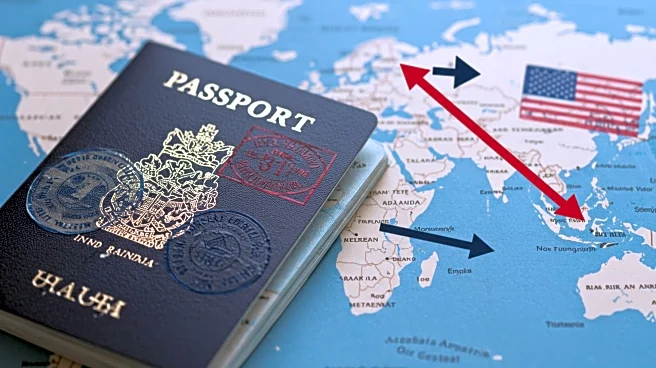Rapid Read • 9 min read
The United States, Canada, and Finland are exploring a strategic collaboration to enhance their icebreaking capabilities through an Arctic Shipbuilding Alliance. The U.S. has expressed a need for up to 40 new icebreaking vessels, while Canada requires over 20 new ice-capable ships for fleet replacement and expansion. This initiative is driven by the commercial and strategic importance of the Arctic region, particularly with the gradual opening of the Northwest Passage, which is expected to increase merchant shipping traffic. The collaboration aims to leverage Finland's expertise in icebreaking technology, as the country constructs over 50% of the world's icebreaking vessels. The existing Icebreaker Collaboration Effort agreement among these nations serves as a foundation for this potential alliance, which seeks to transform the memorandum of understanding into a committed partnership for designing and building the necessary ships.
AD
The formation of an Arctic Shipbuilding Alliance holds significant implications for the defense and economic development of the Arctic region. By collaborating, the U.S. and Canada can enhance their shipbuilding industries, ensuring they meet the growing demand for icebreaking vessels. This partnership could also foster technological advancements and create a sustainable supply chain, benefiting the broader maritime industry. Additionally, the alliance could serve as a model for international cooperation in other strategic sectors, promoting mutual growth and innovation. The collaboration is particularly crucial given the fragile geopolitical relationships in the Arctic, where strategic presence and capabilities are increasingly important.
The next steps for the Arctic Shipbuilding Alliance involve formalizing the partnership and establishing clear commitments among the participating countries. This includes setting milestones for vessel design and construction, as well as integrating government and commercial stakeholders into a cohesive team. The alliance may initially outsource certain activities to leverage existing expertise, but the long-term goal is to develop autonomous capabilities within each nation. As the collaboration progresses, it will be essential to navigate potential trade barriers and geopolitical tensions, ensuring that the alliance remains focused on its strategic objectives.
Beyond the immediate goals of fleet expansion, the Arctic Shipbuilding Alliance could have broader implications for international relations and industry standards. By fostering collaboration in a strategically sensitive region, the alliance may contribute to stabilizing geopolitical tensions and promoting peaceful cooperation. Additionally, the partnership could set a precedent for similar alliances in other sectors, encouraging countries to pool resources and expertise to address global challenges. The development of a robust shipbuilding industry in the Arctic could also drive economic growth and job creation, benefiting local communities and enhancing regional stability.
AD
More Stories You Might Enjoy










